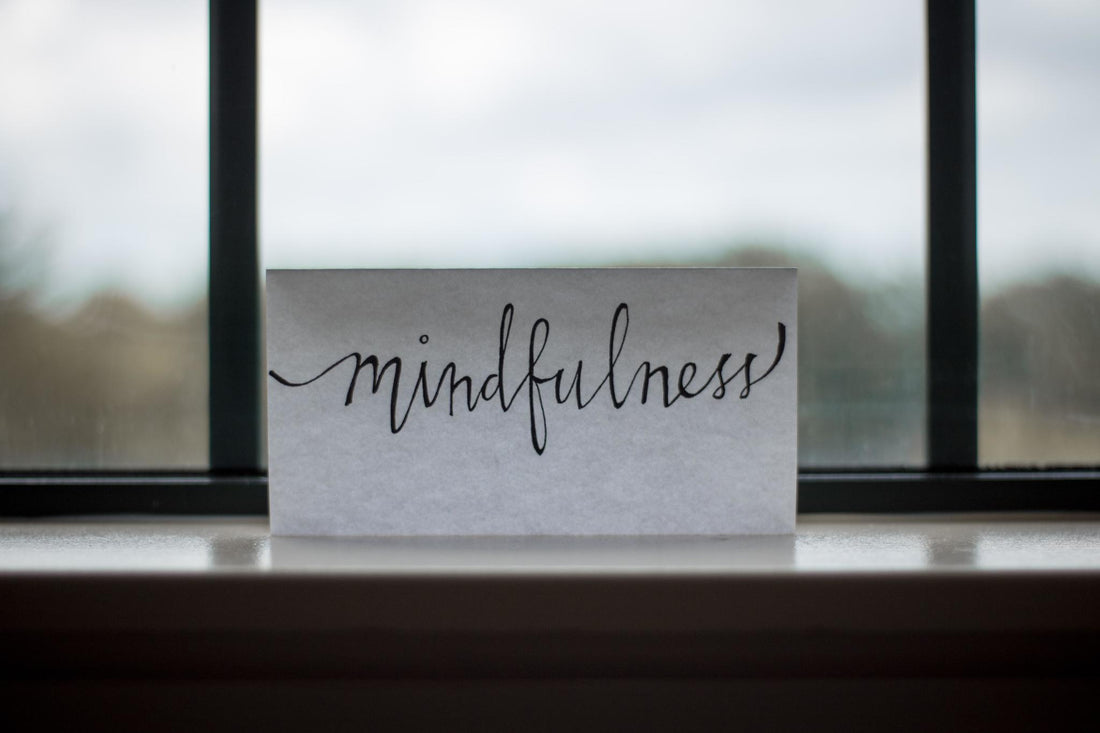With over 300 million regular practitioners, yoga is one of the most popular forms of exercise worldwide. And it's not a recent fad, as it has been around for around 5000 years. Perhaps you're curious about it as a form of exercise and are wondering how to establish a yoga practice and in this article, we're going to show you how to do just that.

Practice
Firstly, it's called practice for a good reason. When you start, don't expect to immediately be able to perform advanced poses such as the crow pose or the handstand scorpion (after thirty years I still can't perform the crow pose and I'm perfectly ok with that). The great thing about yoga is that there are poses to suit everyone.
We all start from different base levels of agility and fitness. The important thing to begin with, like most things in life, is to turn up. With just 15 minutes of yoga a day, you can start to improve your flexibility, improve energy levels and boost your mood. By making it part of your daily routine, you can begin to transform your physical and mental health.
The important thing is to start with the basic poses. All you need is your body, some motivation, and a mat. But where can you practice these poses?

Classes
Ideally, if you live in a large town or city, you'll be able to attend beginner classes. A teacher will be able to show you some beginner poses and will check your form to make sure you're setting yourself up correctly. It's important to get the basics right as these positions will allow you to improve flexibility and move onto more advanced poses.
The other great thing about classes is that they help to establish accountability. Human beings are social creatures and exercising with others can really help to establish connections, especially when you compare notes with your fellow beginners.
Joining a class helps us to feel part of something bigger and if your motivation is flagging, encouragement from a teacher and fellow classmates can be a big help. When I first joined classes in my local town, it wasn't long before we were meeting socially and even met for Christmas dinner one year (although I would recommend drinks and dinner after yoga, not before).
The great thing about yoga is that the improvements become noticeable in a short space of time. It doesn't take long to notice differences in flexibility and fitness levels and this acts as a further boost to motivation levels. We all have to start somewhere and joining a class is a great way to establish a yoga practice.
Online
However, classes aren't for everyone and that's ok too. Maybe you prefer to exercise alone, or you want to try some of the poses first before joining a class. Perhaps you have work or family commitments and it's just not possible for you to attend classes in person. The good thing is that there are lots of teachers online.
During the pandemic, I really missed my classes so I turned to online yoga. A search on youtube quickly turned up teachers such as Adrienne, Kassandra and Tim, just to name a few. A quick search will show you that there are lots to choose from, and they offer classes for a range of levels.
I also found classes via Apple fitness that suited beginners, intermediate and advanced practitioners and I enjoyed these because there was plenty of variety to them.
I'm sure there are lots of other options that I haven't discovered or mentioned but those were the ones that I found and worked for me. There are free and subscription-based class options; shop around and find the one that works best for you but if you are just establishing a practice, I'd try those available for free first.
When you've found a suitable teacher and a beginner series, you'll be able to pause and rewind the videos until you feel you have mastered the basics. This isn't a replacement for an actual teacher, which is why I always recommend classes, but depending on your circumstances it might be the best option for you.
At present, I'm keeping up my solo practice and my classes, and enjoying the benefits of both. I find it easy to stumble out of bed and onto the mat in the morning, whilst I have more time in the evenings to meet with my fellow yogis and teacher. I'll go into more detail about choosing the best time to practice yoga later in this article.
The important thing to remember about any exercise routine is to only do what you can do. You know your parameters, so if you feel pain it's best to stop. And if you have any preexisting medical conditions, it's always best to engage with a physician before you start a yoga practice. Also, make sure to share any concerns you have with a teacher.
But generally speaking, yoga is suitable for everyone. Some exercises can be done whilst sitting in a chair, and routines that last for an hour and push you to your limits. It's your journey, so go at your own pace and enjoy it.
Goals
When it comes to exercise, everyone has varying expectations. Maybe you want to run a marathon, or perhaps you just want to have the energy and flexibility to be able to play with your grandchildren in the garden. Each of us has different goals and it's important to remember them as they can help to keep us motivated.
When it comes to yoga, maybe you just want to be able to bend down and tie your shoelaces without feeling pain, or you want to try and get rid of stiffness in your body. Ask yourself: What do you want from your exercise routine?
Time stops for no one so developing aches and pains is part of getting older. The great thing about yoga is that it can help to slow down the effects of aging, as it improves both flexibility and energy levels. And by engaging in exercise, in this case yoga, we can maintain the muscle mass we have. As the saying goes - use it or lose it.

Equipment and Accessories
Sometimes when people are considering taking up a new form of exercise, they get deterred by the cost of the equipment. Perhaps it's expensive trainers, a new bike or gym membership that people consider too expensive so they decide that form of exercise isn't for them. There are no such problems with yoga.
Here's what you need.
- Mat
- Loose clothing
- Towel
- Yoga Blocks (optional)
When you continue on your yoga journey, you may want to add some yoga blocks and maybe a strap to help with stretching, but neither of those will break the bank. But you generally don't need them when you are trying to establish a yoga practice.

Mat
When it comes to a mat, it depends on your own personal preference but ideally, you want a surface that your feet can grip so that you don't slip. Personally speaking, I prefer a thinner mat rather than a thicker one because I find it easier to keep my balance.
There are also different types of materials for mats such as cork and rubber. I tend to go with rubber as I find it gives me good traction but that's based on my own personal experience. There are also slightly longer mats available if you are tall, and that might work better for you.
But when you're starting out a normal mat will do the trick and you can always change it as you progress on your journey. Generally speaking, a yoga mat should last between six months and a year, depending on wear and tear, and they're not expensive to replace.
Loose clothing
As you're stretching and moving between poses, you don't want to wear anything too tight or uncomfortable. When it comes to a top, you want something that's loose fitting but not too loose that it covers your face when you're in a downward dog.
For your bottom half, you are looking for something comfortable and breathable. You can build up quite the sweat in yoga so you want to try and stay cool. Yoga pants or leggings are the way to go here.
As yoga has increased in popularity so has the range of clothing available. There are a great variety of crop tops, high-waisted pants, leggings and matching tops for you to choose from, ensuring that you look good and can perform a range of poses without feeling restricted in your movements.
Which brings me to the final item I always have close by when I'm practicing yoga:
Towel
As I've said, engaging in yoga can be quite sweaty, especially in some of the more challenging poses. I have a couple of microfibre towels that I can use to cover the mat for extra grip if I'm sweating a bit, or to use after a session. I never attend classes without one.
Time
It's very much a personal preference as to when you practice yoga, and if you are like most of the population, your choices are going to be between rolling out the mat in the morning or evening time. But there are a couple of things to consider when you're trying to establish a yoga practice.

Morning
If you have time, yoga in the morning is a great way to wake up your body. When I know I'm going to be practicing early, I have my mat rolled out and yoga clothes nearby. I have attended sessions at yoga studios but that was when I had a bit more time on my hands and wasn't rushing to work.
The great thing about yoga in the morning is that it allows you to stretch and shake off the muscle stiffness that accumulates overnight. It's a great way to boost energy levels and a few sun salutations will get the blood flowing again. It's a natural alternative to putting on a pot of coffee.
Evening
Instead of slumping in front of the TV and snacking, evening yoga offers you the chance to work out the kinks in the body caused by the stresses of the workday. With its emphasis on deep breathing and release of tension, evening yoga will also help you to sleep better.
Personally speaking, I like to mix up both practice times. By listening to my body I'm able to identify my needs and adjust my practice accordingly between morning and night. After a little time, you'll be able to do the same, as yoga allows you to tune into your own physical needs.
Either way, it's best to pick a time and try to stick to it. Like I said at the beginning of this article, turning up is one of the most important elements of establishing a yoga practice. Even just ten or fifteen minutes of practice each day is enough to get started and build a solid routine.
Summary
So those are just some of the things to consider when you want to establish a yoga practice. You really don't need a lot to get started, and in a short space of time, you can see real improvements. If it's something you've been thinking about, you can see that nothing is holding you back.
Yoga is of great benefit at any age. I hope what you have read inspires you to establish your own yoga practice, as it is a personal journey for each of us. It's rewarding, beneficial and offers great benefits for your body, your mind and heart. And most of all - remember to enjoy your practice and have fun!

